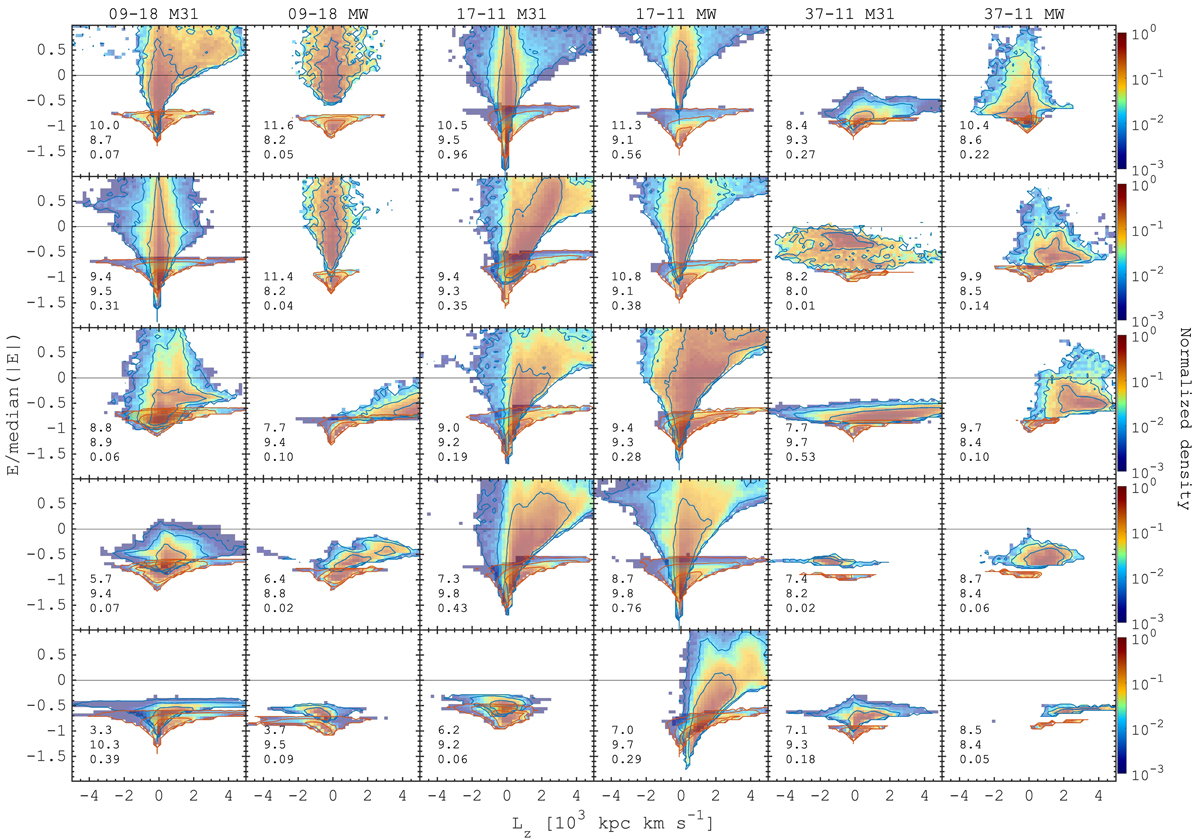Fig. 3.

Download original image
Energy-angular momentum relation for the stellar remnants. Five most significant mergers (M1–M5; see Fig. 4 in Paper I) are shown at the time of accretion (blue contours) and with at z = 0 (red contours). The merger accretion lookback time (Gyr), total stellar mass of the merger debris at the time of the merger (log10(M*/M⊙)), and the stellar mass ratio (μ*) relative to the main M31/MW progenitor at the time of the merger are given in the bottom left corner of each panel. Since the total host mass increases over time, the initial Lz − E distributions have lower energies (upper half in each panel), while at z = 0 clumps at higher |E|. The density maps are transparent to distinguish the overlap for some of the most recent mergers. Both the energy and angular momentum of accreted systems are not conserved after the time of accretion, as often assumed in the literature. This energy change is caused by the mass growth of the host galaxy and the angular momentum transformations are due to the non-axisymmetric time-dependent potential of the galaxy with a certain contribution from the population of satellites orbiting the host.
Current usage metrics show cumulative count of Article Views (full-text article views including HTML views, PDF and ePub downloads, according to the available data) and Abstracts Views on Vision4Press platform.
Data correspond to usage on the plateform after 2015. The current usage metrics is available 48-96 hours after online publication and is updated daily on week days.
Initial download of the metrics may take a while.


